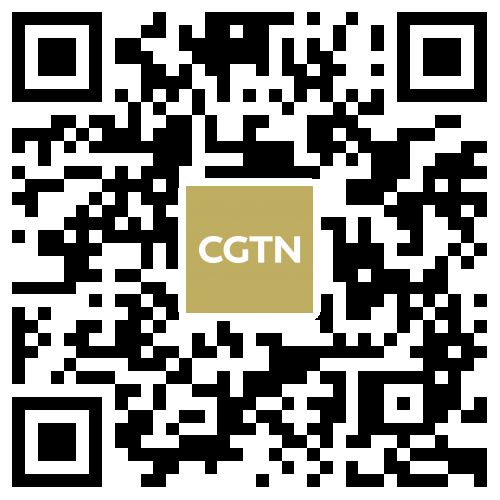
Opinions
11:43, 27-Mar-2018
Opinion: As a trade war looms, Trump risks return to US isolationism
Wang Xiaonan

US President Donald Trump drew worldwide fury once again when he signed hefty tariffs on Chinese imports worth 60 billion US dollars on March 22. Though not quite surprising, his move has stoked fears of a full-blown trade war as any economic fluctuation between the world’s largest two economies may well stir the world economy. Over the past week, the news hit the headlines, freaking out stocks and future markets as well as putting politicians, businessmen and consumers on the edge.
The tariff announcement is a step in the conservative president’s anti-globalization campaign but not the culmination. Since his inauguration, Trump has taken a slew of protectionist measures amid a surge of anti-globalization, nationalism and even populism in the West. China, as the world’s second largest economy after the US, is the main direct target in this rancor.
As China has maintained stunning economic development over the past decades, the US believes that they brought this developing country to the international order but they have failed to benefit from the economic globalization as expected. Washington thinks it helped Beijing in the WTO negotiation, but Beijing prospered under a different development framework.
The US, though seeing a rebound in its economy, is still struggling to stimulate its consumer market, revive its manufacturing industry, and bring its jobs back from the worst economic disaster since the Great Depression.

March 23, 2018: Stocks plunge at New York Stock Exchange, as investors fear that trade tensions will spike between the US and China. /VCG Photo
March 23, 2018: Stocks plunge at New York Stock Exchange, as investors fear that trade tensions will spike between the US and China. /VCG Photo
That’s why Trump clings to his “America First” agenda, which helped put him in the White House. With the mid-term elections coming up in November, the president has to cling to the slogan to pander to his constituents, many of whom are white working-class voters eager for stable jobs in the flagging manufacturing sector.
Therefore, taking on China – the world’s largest manufacturer – with increasingly punitive trade moves precisely serves Trump’s political ambition to secure his seat in the Oval Office.
Essentially, the real estate giant-turned president is desperate to exhibit his “ability” to square the so-called “trade imbalance” to his Republican electorates, who are increasingly querulous about free trade.
It’s expected that the Trump administration will not stop here. The last few months saw a dramatic turnover of West Wing figures: The feisty president replaced Rex Tillerson with Mike Pompeo as new director of Central Intelligence Agency, gave Peter Navarro his job back, called Larry Kudlow to the lectern as his top economic advisor, and picked John Bolton to lead the National Security Council.
With such a bunch of trade skeptics and China hawks around, Trump may well favor further aggressive trade and manufacturing policies targeting Beijing. As a result, the policies promulgated by him and his advisors are increasingly estranging them from the international community and its long-established rules, in a startling return to the US isolationism set forth by the Monroe Doctrine.

US President Donald Trump waves as he arrives at Andrews Air Force Base, Maryland, March 25, 2018. /VCG Photo
US President Donald Trump waves as he arrives at Andrews Air Force Base, Maryland, March 25, 2018. /VCG Photo
Previously, there were advisers holding Trump back from indulging in these tendencies. But with the recent personnel changes, there are no moderate voices nearby. When things spiral out of control, Trump will have created a moat around him and his cheerleaders.
Nonetheless, the president’s trade card will likely backfire. The Rust Belt, home to “forgotten” men and women whom Trump vowed to help, will suffer the most in the trade stalemate. Prohibitive tariffs on Chinese imports will raise the prices of US domestic products and tank the latter’s consumer-based economy, resulting in even more job losses. By then, will blue collar workers still support Trump?
In actuality, several multinationals have already fallen victim to Trump’s protectionist zeal. Walmart, the world’s largest retailer, has undergone two shakeups in its product-purchasing team. Earlier in the year, the largest private employer in 22 US states closed around 10 percent of its Sam's Club stores, laying off 11,000 workers. According to its 10-K report, tariff increases will “materially and adversely” affect its financial performance and damage its international reputation.
With the White House trade policy taking a more apparent toll, an increasing number of rattled US conglomerates are starting to warn the Trump administration of possible consequences. A trade war is not just internecine to both countries but also detrimental to the global value chain.
When that day comes, Trump’s “America first” vision will come to naught. He will no longer have his base of voters to support him; What’s worse, he may become isolated in his own isolationism, only surrounded by yes-men who see eye to eye with him on hawkish policies.

SITEMAP
Copyright © 2018 CGTN. Beijing ICP prepared NO.16065310-3
Copyright © 2018 CGTN. Beijing ICP prepared NO.16065310-3